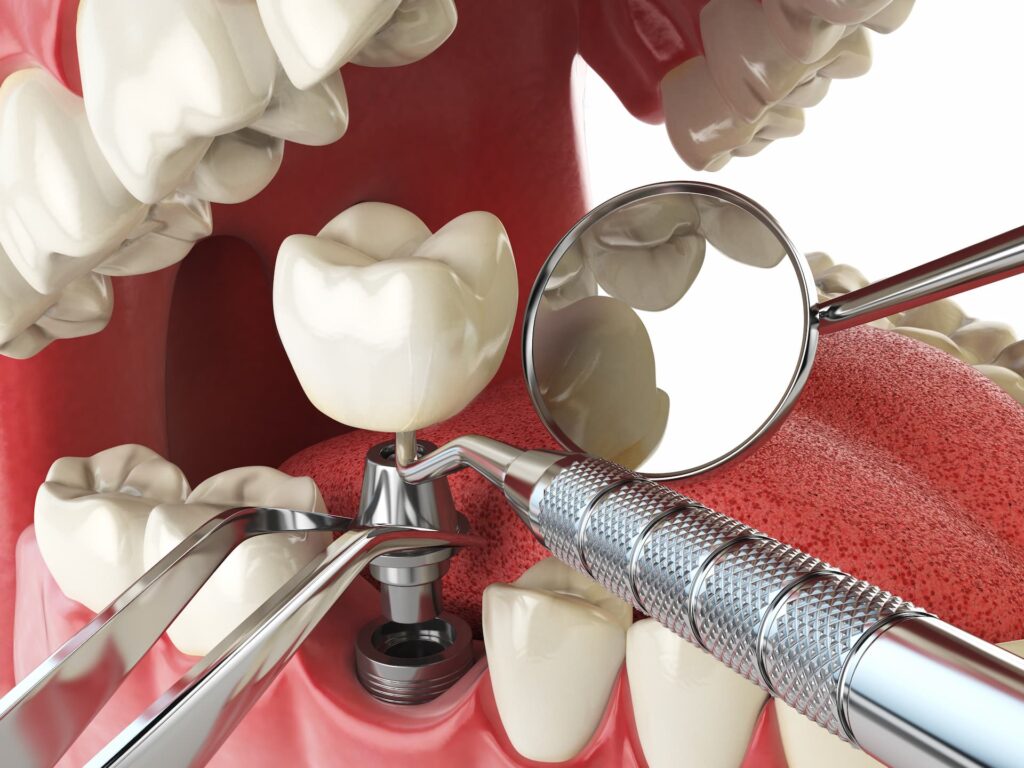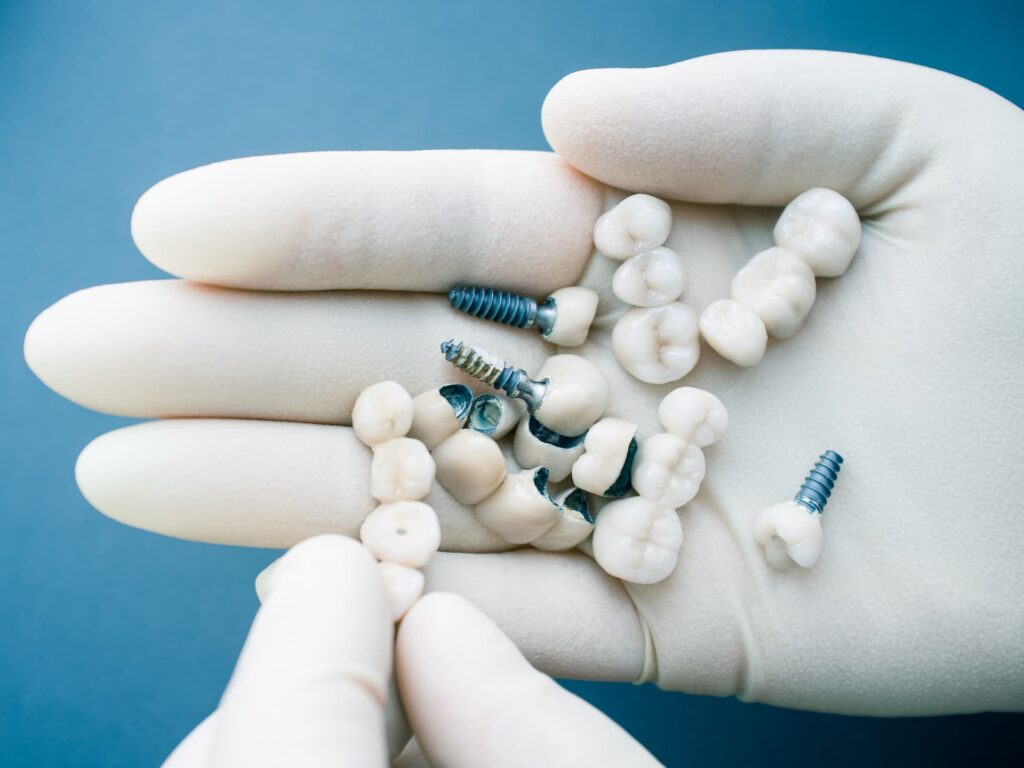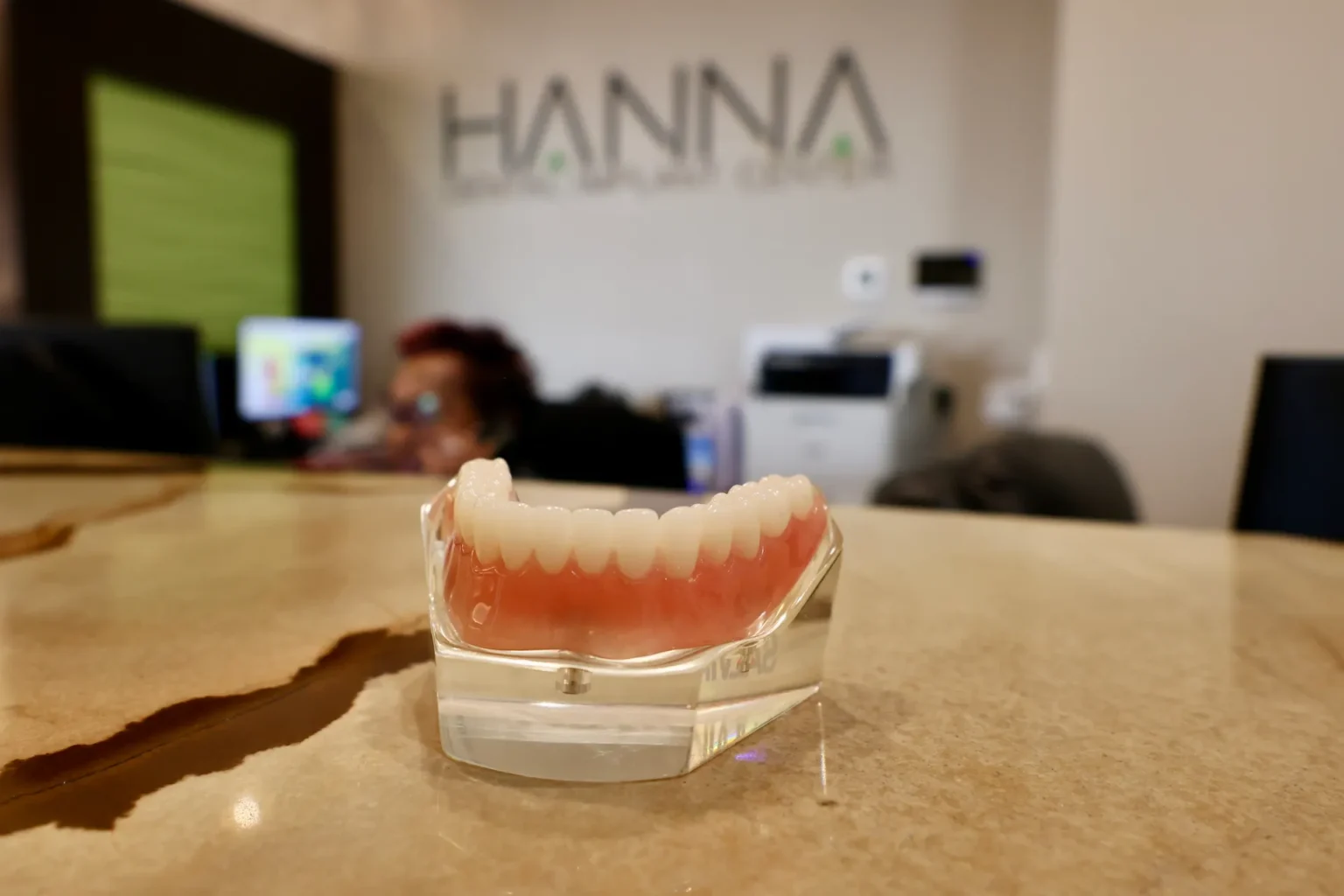Tooth implants are gaining popularity as more people turn to implants to reclaim their smiles. But how does a tooth implant work?
A dental implant is an artificial tooth root that is placed into the jawbone to secure a restoration, such as a crown, bridge, or denture. The implant functions like a natural root, providing a secure and stable foundation for the restoration. It is made from a biocompatible titanium alloy that fuses with the jawbone over time. Once the implant is in place, it can replace a single tooth or support a full arch of teeth.
This guide will help you understand more about tooth implants, how they work, and whether or not they are a good option for you.
Understanding Tooth Implants
Tooth implants are a permanent solution to replacing missing teeth. They are made from titanium posts that are surgically inserted into the jawbone, acting as an artificial root. The post is fitted with a custom-made abutment and a dental crown, which looks and functions like a regular tooth.
A tooth implant is made of a titanium post that is surgically inserted into the jawbone. The post is then fitted with a custom-made abutment and a dental crown.
The different parts of a tooth implant include the implant post, abutment, and dental crown.
- The implant post is a titanium post surgically inserted into the jawbone and acts as an artificial root.
- The abutment is a custom-made piece that connects the implant post to the dental crown.
- The dental crown is the visible part of the implant and looks and functions just like a regular tooth.

The Tooth Implant Procedure
A tooth implant is one of the most effective ways to replace missing teeth. It is a surgical procedure that involves placing a metal post in the jawbone, which acts as an artificial root. This post is then covered with a crown to create the appearance of a natural tooth. The entire treatment typically takes a few months to complete.
Steps involved in getting a tooth implant
The first step in getting a tooth implant is to have a consultation with your dentist. During the consultation, your dentist will take x-rays of your mouth and jawbone to determine the feasibility of the implant.
If the implant is deemed viable, your dentist will proceed with the implant placement surgery. This involves making a small incision in the gum to insert the metal post, which is then secured into the jawbone. Once the implant is secured, Hanna Dental typically places a crown or abutment in place.
There are two main types of tooth implant surgery, and your dentist will likely advise which is best.
Different types of tooth implant surgery

There are two main types of tooth implant surgery: immediate and delayed placement. With immediate placement, the implant and crown are placed in the same appointment.
On the other hand, delayed placement involves waiting several months after the implant is inserted before the crown is placed.
| Immediate Placement | Delayed Placement | |
| Timing of surgery | Implant is placed immediately (or within 48 hours in some cases) following tooth extraction | 3-6 months after tooth removal |
| Healing time | Generally faster | Generally longer |
| Success rate | Slightly lower | Slightly higher |
| Bone loss | May be greater | May be less |
| Number of procedures | One | Two |
| Complexity of surgery | Generally less complex | Generally more complex |
| Implant stability at placement | May be less stable | May be more stable |
| Type of implant used | Certain implants may not be suitable | Any type of implant can be used |
| Patient candidacy | Requires careful patient selection | More forgiving in patient selection |
| Usually recommended for | Simple cases with good bone density and gum health | Cases with lower bone density, gum disease, or other complications |
Immediate placement is done on almost all cases, and is the most convenient placement option. With this method, the implant and crown can be placed in the same appointment. On the other hand, delayed placement is recommended for patients with weaker jawbones who need to wait several months before the crown is placed.
Tooth implant surgery is generally safe and effective, but some potential risks and complications may arise. These include infection, nerve damage, and sinus problems. Discussing these potential risks with your dentist before proceeding with the procedure is essential.
The recovery process after getting a tooth implant is generally straightforward and should be discussed with your dentist beforehand.
After the implant has been fitted, there will be some swelling and pain, which can be managed with over-the-counter painkillers.
It is important to follow post-operative instructions from your dentist, such as using a salt water rinse and avoiding certain foods, as this helps to reduce swelling and prevent infection.
Potential side effects or complications during the healing process include
- inflammation of the gums
- Infection
- nerve damage
- improper healing of the implant site
It is important to contact your dentist immediately if you experience any unusual symptoms.

How to properly care for a tooth implant to ensure its longevity and effectiveness
Proper care of tooth implants helps to ensure their longevity and effectiveness. This includes avoiding hard or crunchy foods, brushing and flossing regularly, and visiting the dentist for routine check-ups and cleanings. Maintaining good oral hygiene helps keep the gums healthy, which is important for successful implant integration.
Benefits and Drawbacks of Tooth Implants
Tooth implants are an excellent solution for missing teeth, offering a stable and long-lasting alternative to traditional dentures or bridges.
The primary benefits of getting a tooth implant include improved appearance and speech, better oral health, and a secure and comfortable fit.
However, there are some potential drawbacks to getting a tooth implant, such as the cost and the time commitment required for the procedure.
Advantages of getting a tooth implant
Tooth implants are an ideal solution for filling in gaps in your smile, offering a secure and comfortable fit as well as improved appearance and speech. Tooth implants also provide better oral health, as they help to preserve the jawbone and prevent further tooth decay. In addition, they can last a lifetime with proper care, making them a long-term solution for missing teeth.
Getting a tooth implant can drastically improve your appearance and speech. The implant is a replica of your natural tooth, so it blends in seamlessly with the rest of your teeth. Additionally, the implant is secure and comfortable, meaning that you won’t have to worry about it slipping or shifting when you’re speaking.
Tooth implants are one of the best ways to maintain your oral health. They help to preserve the jawbone and prevent further tooth decay. Additionally, they can last a lifetime with proper care, making them a long-term solution for missing teeth.
Are there any potential drawbacks of getting a tooth implant?
There are some potential drawbacks to getting a tooth implant, such as the cost and the time commitment required for the procedure. There is a risk of infection or rejection of the implant, and the process can be painful. However, these risks can be minimized with proper care and maintenance.
Getting a tooth implant is a costly procedure, and the cost can vary depending on the type of implant and the number of implants needed. The process can take several months, so you must be prepared to make a long-term commitment if you decide to get a tooth implant.
Tooth implants offer a secure, comfortable fit, improved appearance and speech, and better oral health. In comparison, traditional dentures and bridges are less secure and can be more uncomfortable, making them less ideal for long-term use. Bridges can damage the surrounding teeth, whereas tooth implants do not.
FAQ: How Do Tooth Implants Work?
How painful is a dental implant?
Dental implant surgery usually isn’t painful or minimally painful at most. Your dentist will apply a local anesthetic to the area to ensure you don’t feel any discomfort during the procedure.
What is the disadvantage of implant teeth?
Dental implants can be expensive, more so than other tooth replacement options. The cost of a single implant can range from $1,600 to $3,000, depending on the type of implant and other factors. In addition, the procedure can take several months to complete.
What is the most painful part of a tooth implant?
The placement of the implant itself isn’t painful, as the area will be numbed with a local anesthetic. However, some patients may experience discomfort or swelling in the days following the procedure.
Are dental implants worth it?
Dental implants are a long-term solution to missing teeth, with a success rate of up to 98%. They look and feel natural and can last a lifetime with proper care. They also improve your ability to chew and speak and reduce the risk of bone loss in the jaw.
Conclusion
A tooth implant is a surgical procedure to replace a missing tooth with a prosthetic or artificial tooth. It involves an implant inserted into the jawbone and a crown or bridge attached to the implant to replace the missing tooth.
Tooth implants offer a permanent solution for replacing missing teeth and can restore the look and function of your natural teeth. They can also help preserve facial structure and prevent further tooth loss.
At Hanna Dental Implant Center, we can help you determine if a tooth implant is right for you. If you’re considering a tooth implant, book an appointment to discuss your options with one of our experienced dental implant specialist today.



